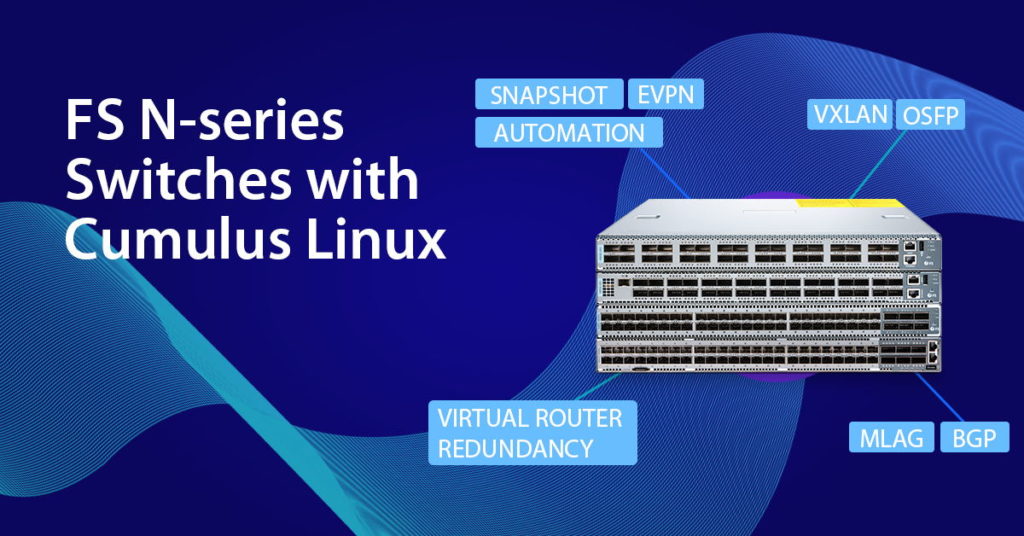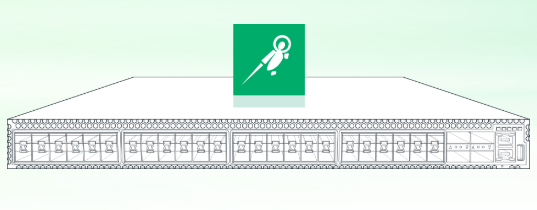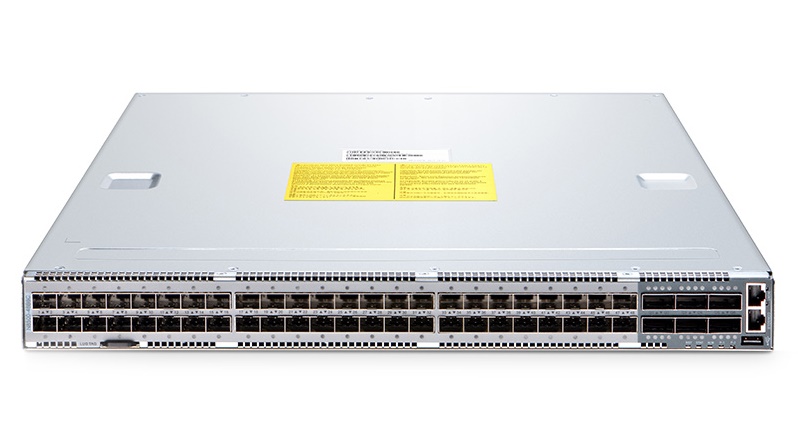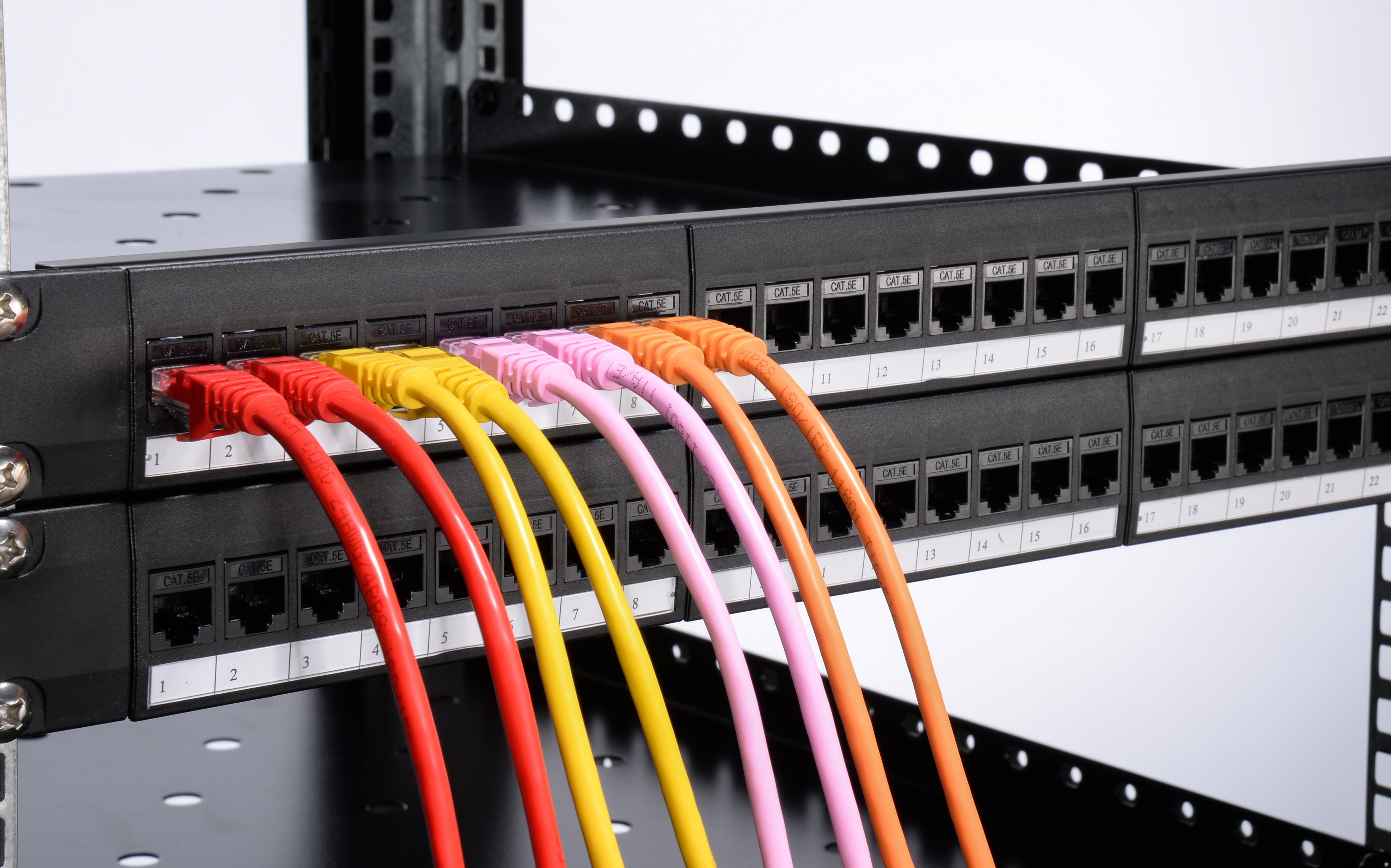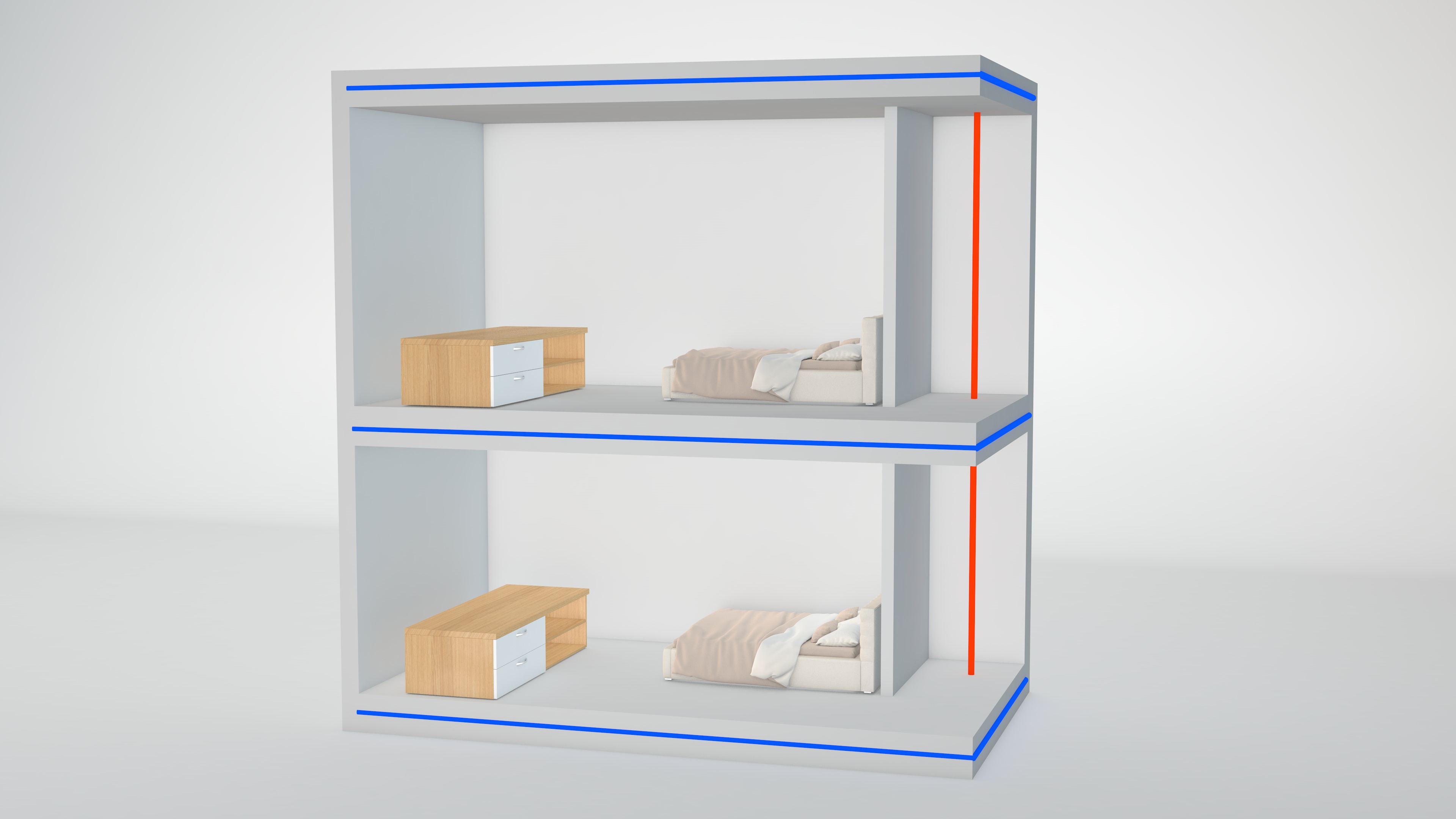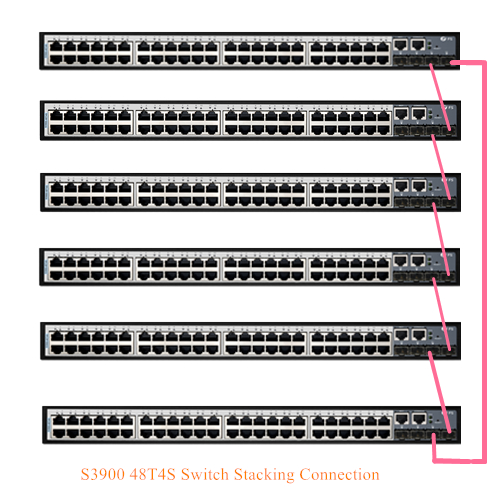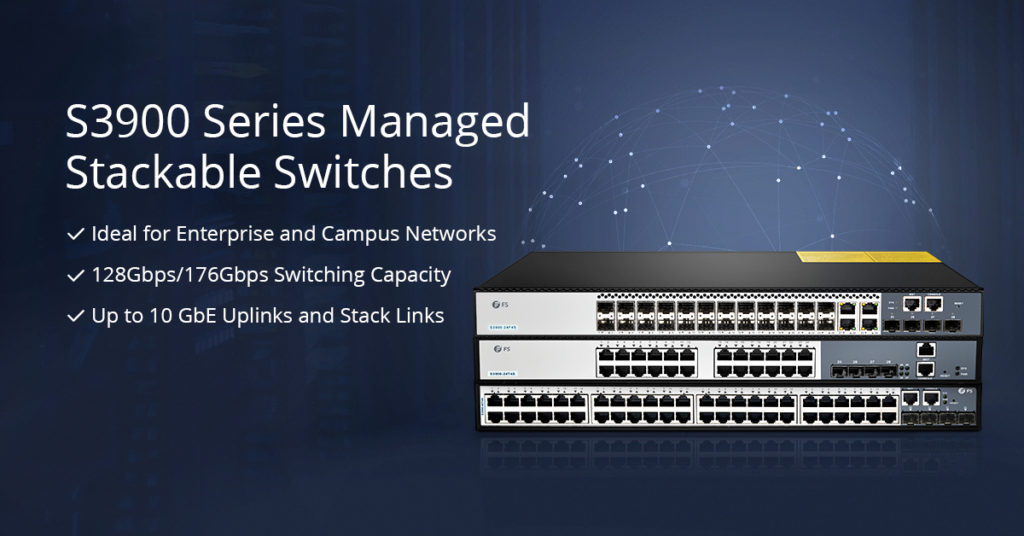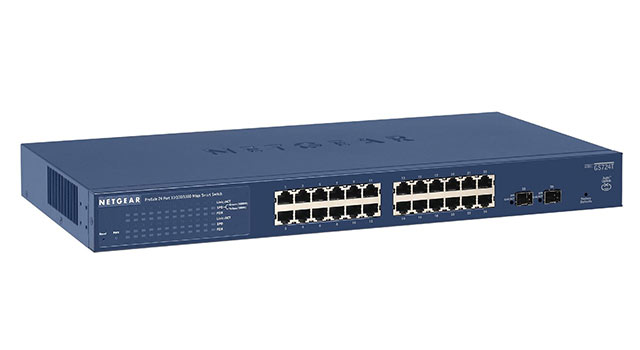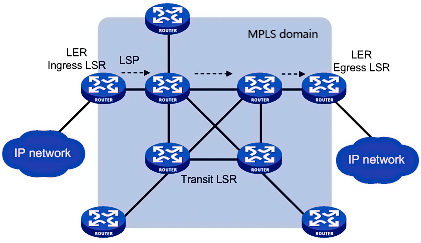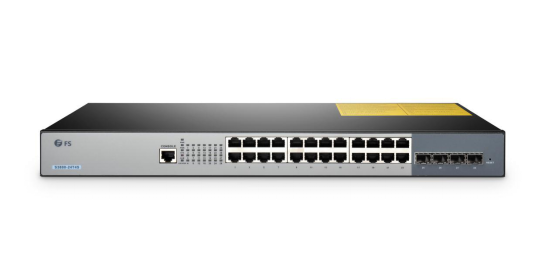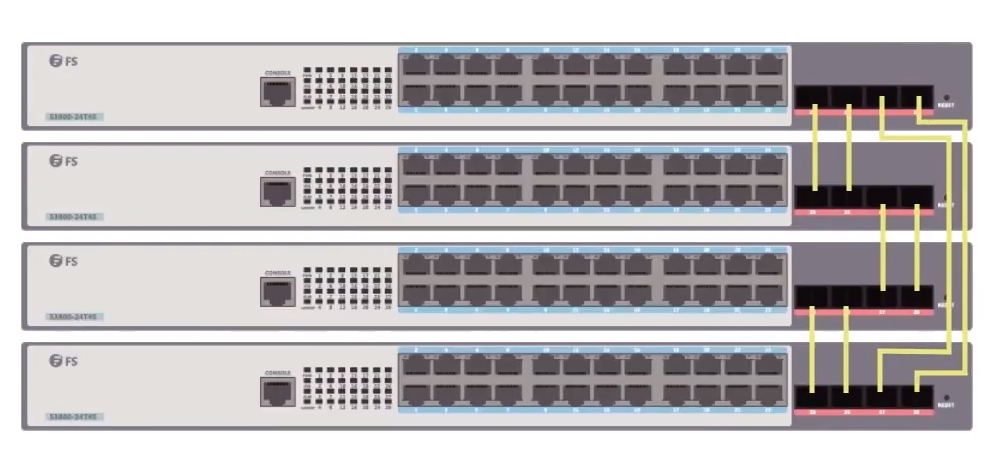What Is Open Networking and How Does It Benefit Customers?
Open networking possesses distinct interpretations in different fields. It gradually picked up steam when adopted in open network switching, attracting flocks of vendors to take a share from the giant and burgeoning market. What is open networking? This article facilitates us to have a close look at it.
What Is Open Networking?
Open networking appeals to breaking the tight linkage between the hardware and software. Previously, network switches are sold with hardware and software together. That is to say, if users buy a Juniper EX or MX series network switches, they also buy JUNOS; if customers buy a Cisco Catalyst network switch, they have to buy Cisco IOS. With the advent of open networking, things vary greatly alongside the separation of proprietary hardware from its software. Ethernet switch now lives in a disaggregated world where these elements can be chosen from the most appropriate supplier. Not only hardware and software, but also technical support and accessories are traded respectively.
How Does Open Networking Impact on Network Switch?
Open network switching hardware was first adopted by tech giants such as Google and Facebook, followed by a slew of enterprises. Besides, Cisco is jumping on the bandwagon of disaggregation in data center networks. It will allow data center customers to run its Nexus operating system (NX-OS) on third-party switches and to use other network operating system on its Nexus switches. Having been backed by several hyperscale companies, open networking drives the network switch to develop in a decentralized way.
How Can Network Users Benefit From Open Networking?
Open network vs. closed network, flexibility wins. As it is stated elsewhere, open means choices and options. You can configure the devices with equipment, software and architecture designs from different vendors. And you can turn down the affiliated OSes that may be feature-rich for you, and refer to those satisfying your rigid demand. Open networking entitles you to the architectural freedom to deploy the best topology and protocols for your environment. This has also fostered innovation dramatically with technologies and practices, allows enterprises to move faster to capture opportunity in the market.
With open networking, you can save budget on dealing with what breaks down rather than throwing away the malfunctioned network switch. That is to say, if open source hardware fails, then you can change it; if software can no longer satisfy your needs, then replace it with other open source software. For example, some people have encountered the issue that the switch whines loudly. In this case, you can decide to make changes only on the hardware. Targeted troubleshooting also saves time and energy.
From the perspective of the vendor, they can jump out of the scenario where they work behind closed doors, and turn to seek common points while reserving difference from others. You want to survive in the market, you need to be open, inclusive and be compatible to the third parties gadgets. A closed system by definition prevents others from openly interfacing with your offer, thus stifling collaboration and increasing the time to market. FS.COM not only released the open networking switch, but also recently sought cooperation with Cumulus Networks to add the leading open source operating system—Cumulus Linux to the FS N-series 40G and 100Gbe switches. This progress brings high-end features like automation to customers.
Conclusion
Open networking represents the general trend. As vendors rush in swarms, customers can stay and wait to reap the benefits. Choose what suits your hardware needs from household names such as FS.COM. This freedom extends to every aspect of your purchase including cables and optics.
Why Cumulus Linux Is Popular Among White Box Switches?
The network switch has now grown in the same way that the server was developed in the market. Proprietary switches are now challenged by the white box switches that bring open source software. There are many network operation systems that can be accessed through ONIE for bare metal switches. Among them, Cumulus Linux is the most popular one. How does it develop and why does it stand out from the rest?
Cumulus linux is a version of the open source operating system built to run on bare-metal switch hardware. Cumulus Linux is a software distribution that runs on top of industry standard networking hardware. Linux has a very full-featured networking stack and the mature linux operating system has already been in use for implementation of technologies from most networking vendors prior to incorporating it into their proprietary platforms. Sysadmins have access to and get familiar with a huge variety of tools for managing and operating linux platforms. It is said that 34% of the Fortune 50 have already adopted Cumulus linux. Then why Cumulus linux is popular among white box switches?
Over the years, consumers have bought proprietary network switches from well-known vendors who installed their operating system on the original hardware. Now with the advent of white box switches, customers have found a more flexible approach to create their own switches. They can get hardware directly from the ODM at a discounted rate compared to similar switches from traditional networking vendors, because there are no network operating system installed in it. Vendors like Cumulus Networks and Big Switch Networks offer operating systems that can run on a variety of hardware switching platforms. These platforms can be installed into multiple bare metal hardware that come from different suppliers.
The white box switch which enables people to purchase hardware and software independently is gaining popularity. It excels traditional switches in cost and the flexibility. Cumulus linux gives programmers and developers the ability to customize the platform to their needs.
Built for automation, scalability and flexibility, Cumulus Linux is the world’s most flexible open network operating system for bare metal switches which allow you to build a data center network that ideally suits your business needs.
Cumulus Linux Provides Economical Scalability.
Since Cumulus Linux is Linux, all applications available with a Linux operating system are also available with Cumulus Linux. With off the rack hardware and a standardized linux stack, people can increase efficiency in operation by reducing production time. Both CapEx and OpEx can be lowered.
Cumulus Linux Is Built for the Automation Age.
Cumulus linux is a powerful, networking-focused linux based free operating system that offers a complete open architecture and is designed for easy automation. With automation, all of your configurations are stored in one place. No longer need to log into a dozen switches and start typing to make changes on multiple switches. Using automation, you can accomplish the change in one centralized repository and push them out to your switches with the flip of a switch.
Cumulus Linux Provides Choice and Flexibility.
Cumulus Linux currently runs on 50+ hardware platforms from 9 different vendors, and boasts two different types of silicon. It greatly increases the choices of hardware and avoids any potential hardware lock in or supply chain issues. Build your network based on your needs and you budget, and pivot easily as the industry changes.
ConclusionProviding economical scalability and choice flexibility, Cumulus Linux, the leading network operating system, greatly boosts the adoption of white box switch. Unless you try Cumulus Linux, you can never taste its charming.
CMR vs. CMP: When to Use Them in Your House?
Lots of customers have found the letters “CM”, “CMR” and CMP” in the product description when purchasing copper cables like Cat5e cable and Cat6 cable. These terms are the most common cable jacket ratings specified by the National Electric Code (NEC). CM rated cables that are designed for general use won’t be covered in this article. Let’s see the difference between CMR vs. CMP in their applications.
Introduction of CMR vs. CMP
CMR cable stands for “Communications Multipurpose Cable, Riser”. It is also referred to as “riser-rated cable” and designed to prevent fires from spreading between floors through risers or vertical shafts, that is to say, it can self-extinguish when ignited. As for flame-resistance, it does better than the CM cable, so CMR cable can be used where CM cable would be required. Consequently, CMR cable is more expensive than CM cable.
CMP cable stands for “Communications Multipurpose Cable, Plenum”, which is the so-called plenum cable. It is constructed to limit the amount of smoke emitted in case of a fire and prevent flame from spreading to more than five feet. In some places where air travels throughout a building via plenum spaces, it is critical that Ethernet cable is made of the material that doesn’t give off toxic fumes if burned. CMP cable is the one suitable for installation into air plenum spaces.
When it comes to the difference between CMR vs. CMP, as the flammability requirements for CMP cables are stricter than CMR cables, plenum cables can always replace riser cables, but not the reverse. Plenum rated cable is always twice as expensive as riser cable.
CMR vs. CMP: When to Use Them in Your House?
Even though we have read lots of materials telling what is CMR vs. CMP, the knowledge about when to use these cables truly matters for the mass people. Only being applied to the practice, can the theory be tasted. Let’s see the following illustration. In the picture, the CMP plenum cables run horizontally in the structured ceiling and the dropped ceiling or under a raised floor where is typically considered plenum. This is largely due to the fact that this place is full of fast-moving air as it facilitates air circulation for heating and conditioning systems. The presence of fresh air can bring dander of rapid flame spreading or dangerous gases distribution, thus causing damage to the furniture and threatening people’s lives. Therefore, CMP must be used in air ducts or vents. Typically, it is the prime choice for cabling construction in train station, airport and other public people-intensive places where we must prevent hazards to human health and safety from wiring.
CMR riser cable runs between floors in non-plenum areas as the red line indicates. They are usually run vertically from the basement to the upper floor, so long as the cable does not need to run through an air duct.
CMP, CMR and the like are the NEC’s ratings for the cable jacket. Different types of copper cables like Cat5, Cat5e and Cat6 cables all have CM, CMR, CMP versions. They have the same exact copper inside. The difference is the outer casing or “jacket” that surrounds a cable’s internal wiring and insulation.
Conclusion
This article covers what is riser cable and plenum cable, when to use plenum cable and riser cable. Choosing the right CMR vs. CMP cable is really important. It not only helps prevent dangers but also avoid unnecessary interference by local authorities if you fail to meet the fire codes. If there are any problem or puzzle during cables selecting or application, FS excellent tech team and sales team would like to offer help.
Switch Stacking Tutorial of 48-port Stackable Switch
As switch stacking, the premium feature of few network switches, evolves as a core competence of Ethernet switches in the market, vendors strives to release varies stackable switches and produce switch stacking tutorials for customers. This post will take FS S3900-48T4S 48-port stackable switch as an example to explore how to stack switches together.
Introduction to FS S3900 48T4S 48-port Stackable Switch
S3900 48T4S 48-port gigabit switch comes with 48 downlink RJ45 ports that are triple speed copper ports connecting with end-devices and four 10Gbps SFP+ uplink ports that connect toward the core of the network. With 176Gbps switching capacity. This network switch delivers wire-speed switching performance on all Gigabit ports which support auto-negotiation for port speed and duplex mode. The 4 built-in 10G SFP+ ports provide uplink flexibility, allowing the insertion of fiber or copper, Gigabit or 10G transceivers. These 10Gbps SFP+ port can work as both uplinks and stacking links to servers or service provider, corporate, or campus networks, reducing bottlenecks and increasing the performance of the access network.
The dual power supply can ensure the effectiveness of mission-critical network. If one power supply fails for some reason, the other one will take over seamlessly to sustain the normal running of network. Moreover, the design of the S3900 48-port stackable switches incorporates high energy efficiency in order to reduce the impact on the environment. The fan is smart controlled by the traffic. When the switch runs busy, the fan inevitably generates much noise which, however, won’t cause distress. The Green Ethernet power-saving features can be translated into that, on an inactive link, the port moves into inactive mode and saves power while keeping the administrative status of the port up.
How to Stack 48-Port Gigabit Switch?
The S3900 48T4S 48-port network switch can allow up to six switch being stacked together, in which it excels S3800 series switches. Use DAC, AOC or transceiver modules plus fiber optic cable can simply join the switches together. Only the rightmost two SFP+ ports on the switch can be used to stack, and should be cross linked, as shown in the following picture.
How to Manage Switch Stacks Effectively?
Managing switch stacks is also not an easy work because there is a set of network switches in one stack unit. As for the S3900-48T4S stackable switch, an industry-standard command-line interface (CLI), accessed through the console port or Telnet*, provides a familiar web user interface and command set for users to manage the switch. Moreover, just one command and a reboot* can realize switch stacking, more convenient than common switch stacking. An embedded user-friendly web interface helps users to quickly check and manage the 48-port managed switch.
*Note 1: in stacking process, you need to pull and plug the console cable into each 48-port managed stackable switch repeatedly. By contrast, keep telnet cable connected with one switch is enough.
*Note 2: the one being restarted firstly is the stack master.
Conclusion
The S3900 48T4S 48-port stackable switch, born in this era where high speed network is badly needed, is an ideal Gigabit access switch for SMB, enterprise, and campus networks to boost productivity. And it is ideal for Internet Service Providers (ISPs) and Multiple System Operators (MSOs) to provide home users with triple-play services with up to Gigabit bandwidth.
24-Port Switch Price and Performance Comparison
24-port Ethernet switch not only adds more ports for your home router, but also becomes a preferable option for enterprise networks, with dramatically decreased price, expanded feature sets and improved ease of use. Most 24 port switch price are acceptable for users. Here we introduce four 24-port Gigabit switch and make a 24-port switch price and performance comparison.
24-Port Switches Introduction
Aruba JL354A is a 24-port layer 2 managed Gigabit switch. It is equipped with 24 10/100/1000 Gigabit RJ45 ports and 4 SFP+ ports. It supports advanced security and network management tools like Aruba ClearPass Policy Manager and Aruba AirWave, facilitating the deployment and management. The Aruba 24-port layer 2 managed Gigabit switch delivers entry level features for the enterprise campus, SMB and branch offices. It provides built-in 10GbE uplinks, robust QoS, static and RIP routing, IPv6, and requires no software licensing.
FS newly-released S3900-24T4S 10/100/1000BASE-T 24 port Gigabit switch comes with 4 10GE SFP+ uplinks. It is an advanced Layer 2 Plus (Layer 3 Lite) Gigabit managed stackable switch with 10G uplinks. This Gigabit switch is perfect for service providers (ISPs) and multiple system operators (MSOs) to provide home users with triple-play services. Compared with the previous S3800-24T4S stackable switch, S3900-24T4S uses the 24-port switch fanless design, leaving you a comfortable peaceful environment. In addition, the S3900 series switches offered by FS boast nicer web interface which makes it a snap to monitor switch performance, configure ports, even set up port trunks, VLANs, and traffic prioritization. When configuring VLAN, they just require one command and an additional reboot step.
The Netgear ProSafe GS724T is armed with 24 copper 10/100/1000 ports, each capable of powering 2000 Mbps of data throughput in full-duplex mode per port, as well as 2 SFP 100/1000 ports. This 24-port switch enables SMB organizations to harness applications like VoIP, video conferencing, and system security, etc. And it features a fanless system, allowing the switch to work silently without overheating.
The TP-Link TL-SG1024 features 24 Gigabit Ethernet ports and non-blocking switching. It can realize large file transferring and also support 10Mbps and 100Mbps Ethernet devices. Moreover, this network switch has 48Gbps switching capacity with 8K MAC address table, 10KB Jumbo Frame and 4MB buffer memory. This TP-Link switch is a fanless rack mount design with LED diagnostic lights indicating the working condition of each port.
24-Port Switch Price and Performance Comparison
| Gigabit Switches | Ethernet Ports | SFP+ Uplink Ports | Switching Capacity | Forwarding Rate | Power Consumption | Price |
| Aruba JL354A | 24 | 4 | 128Gbps | 95.2Mpps | 29.3 W | $692.00 |
| FS S3900-24T4S | 24 | 4 | 128Gbps | 95Mpps | 21 W | $279.00 |
| Netgear ProSAFE GS724T | 24 | / | 48Gbps | Not Sure | 29W | $299.99 |
| TP-Link TL-SG1024 | 24 | / | 48Gbps | 35.7Mpps | 13.1 W | $79.99 |
In the above chart, four 24-port Gigabit switches are compared in Ethernet pots, SFP+ uplink ports, switching capacity, forwarding rate, power consumption and price which are mostly concerned by customers. All the Gigabit switches listed provide 24 port Ethernet RJ45 ports, but only FS S3900-24T4S and Aruba JL354A 24-port Gigabit switch have 4 SFP+ uplink ports. In addition, FS S3900-24T4S 24-port Gigabit switch is stackable. If you need stronger data transferring capability, FS S3900-24T4S is a better choice considering its competitive forwarding rate. In terms of the power consumption, TP-Link TL-SG1024 and FS S3900-24T4S are lower than others. With regard to 24-port switch price, TP-Link TL-SG1024 is the best budget choice. However, FS S3900-24T4S is cost-effective as it not only provides 4 SFP+ ports to create up to 10 Gbps high-speed uplinks and stack links to enterprise or campus networks but also works smoothly without generating noise.
Conclusion
To sum up, the four Gigabit switches all have their own advantages. What’s more, 24-port switch price is moderate enough and with a few additional researches you will find that 24-port switch price is much lower than that of a 48-port switch whose ports may be idled in some conditions, causing unnecessary waste. There are also many other brand switches in the market, like 24-port switch Cisco SGE2000 and 24-port switch D-link DGS-1024D which enjoys a good reputation. The S3900-24T4S 24-port gigabit stackable switch provides small and medium-sized enterprises with a network that is geared for growth while ensuring performance and reliability.
MPLS Network: How Does It Work?
The entire network today has expanded and there emerge faster Ethernet switch like gigabit Ethernet switch and even 10gb switch which provide us with higher information switching speed. However fast they can forward the data packets, they still undergo complicated procedures. Now there is a way to simplify the data forwarding while maintaining the high forwarding speed. That is the MPLS network.
What Is MPLS Network?
MPLS stands for Multi-Protocol Label Switching. It is a system for fast packet switching and routing that provides the ability to target, route, forward, and exchange network traffic. In most cases, MPLS is regarded operating at Layer 2.5 as it enables data packets to be forwarded at layer 2 rather than layer 3. MPLS is a packet-labeling technique that can map IP addresses to simple fixed-length labels for different packet forwarding and packet switching techniques. MPLS can provide applications including VPNs (Virtual Private Networks), traffic engineering (TE) and Quality of Service (QoS). So we know that MPLS is a packet-labeling technique that prioritizes data, but how does it actually work?
How Does the MPLS Network Work?
In MPLS network, packets are directed through the network based on an assigned label. People tag some packets with certain markings. We can compare the packet to the shipping crate that ships something between two locations. If at every stop, the shipping company needs to open the box to figure out what it is and where it’s going to, it will cost a lot of time and energy. Now if we put the label outside indicating where the packet goes from and to, then whatever shipping company see it will know how to deal with it without opening it.
The basic component of MPLS network is label switching router (LSR). An ingress router with MPLS will label data packets (mail packages) on entry to the network (post office), so routers (mail workers) know exactly where the data is going to without having to open the package again and again. The transit router in the MPLS domain transmits the packet to the egress LER according to the label along the label switching path (LSP) consisting of a series of LSRs. Finally, the egress router that resides at the exit is responsible for stripping the label from the packet and forward it to the destination. In a word, transit router switch the data packet according to the attached label, while egress and ingress routers work for the transformation between MPLS and IP technology.
Advantages of MPLS Network
Here, some people may say “MPLS is indeed a good thing, but why should I bother to change to it as my current network runs well?”. This part will tell the advantage of using MPLS network.
First, regarding its cost, it is a cost-effective solution. Multiprotocol Layer Switching (MPLS) is an extremely scalable mechanism for high performance telecommunication networks. It allows for inter-connectivity growth of your network with minimal addition of hardware. An MPLS network uses communications via a cloud based network with each node connecting to the network providers MPLS cloud, which allows for adding new remote connections without the requirements of adding hardware at your primary site.
Second, let’s see its performance. It provides alternative network paths to improve up-time and reduce network congestion. It also allows for multiple traffic types to traverse the network, thus improving bandwidth utilization. It can also improve end user experience by allowing multiple classes of services to different types of traffic such as VOIP.
Third, one of the most notable benefits of MPLS is that it is applicable to any network layer protocol. It supports transport over Internet Protocol (IP), Ethernet, Asynchronous Transfer Mode (ATM) and frame relay; any of these protocols can be used to create an LSP.
Conclusion
In a nutshell, MPLS was originally put forward to improve forwarding speed. It decreases the forwarding overhead on the core routers. To make full use of it, you can go to the website www.fs.com and consult our experts. FS not only provides top-notch Ethernet switch but also first-class solutions.
What Is a Computer Switch?
The computer switch though has long existed in the market, few people can speak on it with great familiarity. As the network expands, the computer switch grows more sophisticated and diversified. This post sheds light on the computer switch from its definition, working principle and types.
A computer switch is an Ethernet switch in nature. It is a small hardware device that links multiple PCs, printers, assess points, phones, lights and servers together within one local area network, wide area network and different network topology. Each device connected to the switch is automatically connected to and can communicate with other connected devices, as the switch is essentially designed for information exchange. So if you hook up your cable modem to a router, then connect the router to a switch, all devices plugged into the switch can access the Internet, send and receive information and approach shared resources in a smooth, highly secure, and transparent manner.
The computer switch doesn’t exchange information randomly but follow the specific instructions—the MAC addresses of every device. The IP packet arrives at the correct destination with the aid of the frame using MAC addresses of destination and source. It is the computer switch that shoulders the responsibility to complete process as follows.
- Learning – The switch learns the MAC address of the device on the switch port on which it receives the frame.
- Forwarding – The switch forwards message in either unicast or broadcast way. That depends on whether the destination MAC is known for sure or unknown.
- Filtering – The frame will be forwarded through that switch port only for which the switch has already learned the MAC address in its MAC table.
There are different types of computer switches available in the market. Each has different features and functions. Here introduces four common computer switches: unmanaged switch, managed switch, PoE switch and stackable switch.
UNMANAGED COMPUTER SWITCH
Unmanaged switches are typically for basic connectivity. The unmanaged network switch is common to see in our home networks or wherever a few more ports are needed, such as at your desk, in a lab, or in a conference room. It is simply a plug-and-play device that requires no configuration. The gigabit Ethernet switch in your families are mostly the unmanaged switch.
MANAGED COMPUTER SWITCH
Managed switches are more advanced as they give you greater security and more features and flexibility. With this greater control, you can better protect your network and improve the quality of service for those who access the network. These can be achieved by setting a simple network management protocol or SNMP. Faster switches like 10 gigabit switch, 40 gigabit switch, 100 gigabit switch, etc are commonly working as managed switch.
PoE COMPUTER SWITCH
Power over Ethernet (PoE) switch is a network switch that has utilizes Power over Ethernet technology. When connected with other devices, it can support power and data transmission over one network cable at the same time, which greatly simplifies the cabling process. FS offers PoE switches with different port numbers, ranging from 8-port, 24-port to 48-port.
STACKABLE COMPUTER SWITCH
In the large data center, there may be many network applications and also many network switches. It poses great difficulty and triviality to the user to set and maintain each switch. Given this, stackable computer switch rises above the crowd. It enables multiple switches (usually four switches) to work as an individual unit in order to simplify the management, troubleshoot and configuration. This kind of switch can also work standalone switch.
The computer switch is indeed one of the important components of your networking infrastructure. FS offers plenty of fiber switches, PoE switches, or Ethernet-based switches with different port speeds. These switches are great in terms of sales, performance, and quality. To find the right computer switch, turn to our website www.fs.com and consult our expert staff if you have any questions.

